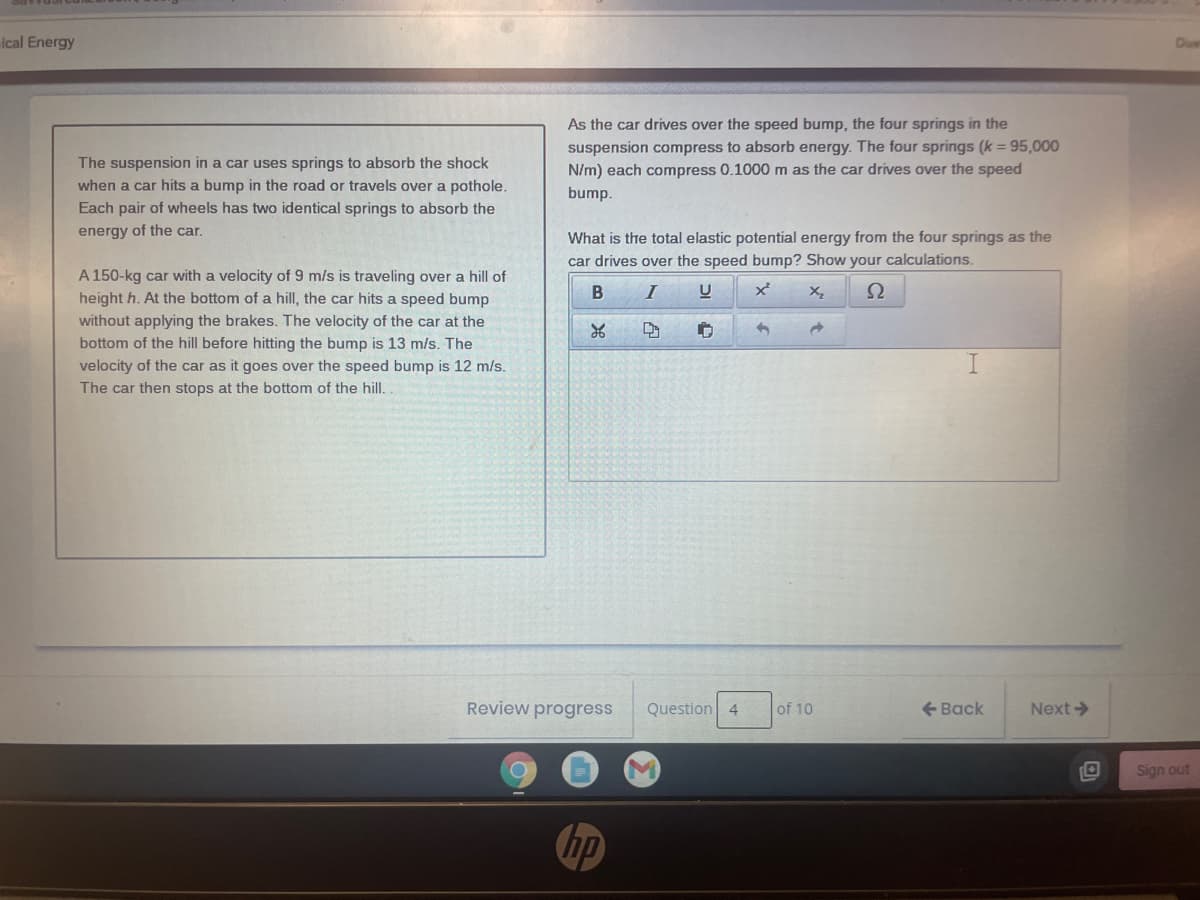As the car drives over the speed bump, the four springs in the suspension compress to absorb energy. The four springs (k = 95,000 N/m) each compress 0.1000m as the car drives over the speed bump. The suspension in a car uses springs to absorb the shock when a car hits a bump in the road or travels over a pothole. Each pair of wheels has two identical springs to absorb the energy of the car. What is the total elastic potential energy from the four springs as the car drives over the speed bump? Show your calculations. A 150-kg car with a velocity of 9 m/s is traveling over a hill of height h. At the bottom of a hill, the car hits a speed bump I without applying the brakes. The velocity of the car at the bottom of the hill before hitting the bump is 13 m/s. The velocity of the car as it goes over the speed bump is 12 m/s. The car then stops at the bottom of the hill.
Simple harmonic motion
Simple harmonic motion is a type of periodic motion in which an object undergoes oscillatory motion. The restoring force exerted by the object exhibiting SHM is proportional to the displacement from the equilibrium position. The force is directed towards the mean position. We see many examples of SHM around us, common ones are the motion of a pendulum, spring and vibration of strings in musical instruments, and so on.
Simple Pendulum
A simple pendulum comprises a heavy mass (called bob) attached to one end of the weightless and flexible string.
Oscillation
In Physics, oscillation means a repetitive motion that happens in a variation with respect to time. There is usually a central value, where the object would be at rest. Additionally, there are two or more positions between which the repetitive motion takes place. In mathematics, oscillations can also be described as vibrations. The most common examples of oscillation that is seen in daily lives include the alternating current (AC) or the motion of a moving pendulum.

The potential energy stored in a spring is given by:-
U= kx2/2
Where;
k= spring Constant= 95000 N/m
x= compression of string= 0.1 m
Trending now
This is a popular solution!
Step by step
Solved in 2 steps









